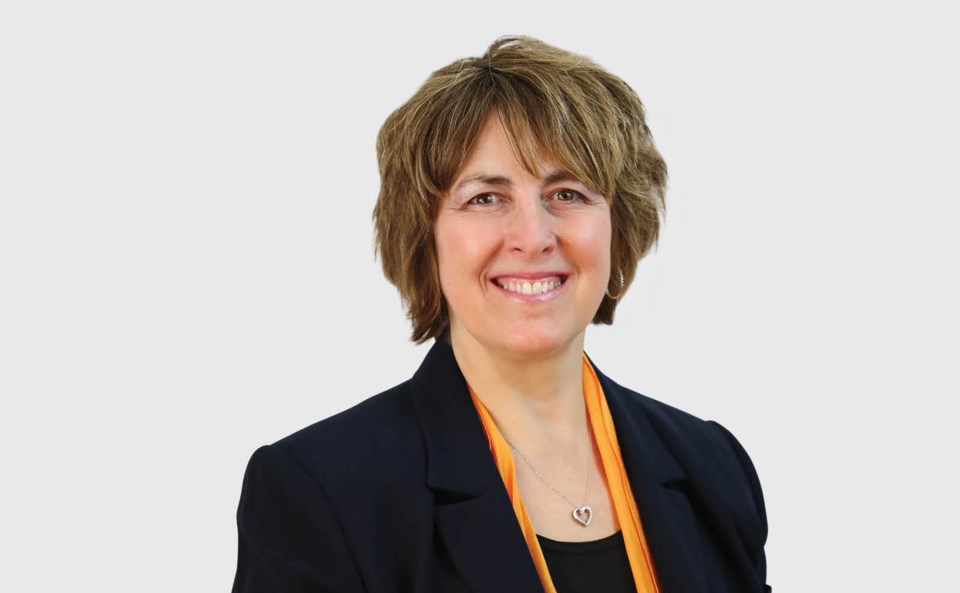Algoma-Manitoulin-Kapuskasing MP, Carol Hughes writes a regular column about initiatives and issues impacting our community.
It’s been almost a year since the Federal Electoral Boundaries Commission for Ontario first submitted their proposal to change the electoral map, proposing to eliminate Algoma-Manitoulin-Kapuskasing, and reducing the total number of ridings across Northern Ontario, from ten to nine.
The Constitution of Canada requires this process of redrawing electoral maps every ten years, and while a large part of the process is focused on changing population demographics, the decision to remove a riding in Northern Ontario definitely felt shortsighted, particularly as the population in Northern Ontario is growing. However, despite rational arguments to maintain the number of ridings across the North, both during the short public hearing phase, and during Procedure and House Affairs Committee (PROC) meetings, the Federal Electoral Boundaries Commission for Ontario ultimately decided to eliminate our riding, and as a result this will surely negatively impact representation across the North.
Following a short few months of public consultations, none of which were held in Algoma-Manitoulin-Kapuskasing, the current riding being affected the most by the proposal, the Federal Electoral Boundaries Commission for Ontario came back to the table with a second proposal that did not allow for public input.
This was after initial interventions from across the North that voiced significant concerns about eliminating an electoral district. In the words of the Federal Electoral Boundaries Commission for Ontario’s report, “this proposal for Northern Ontario generated considerable public interest, input and criticism. There were submissions related to several topics; however, there was an especially high volume of submissions urging the Commission to maintain 10 ridings in this region.
This included resolutions from dozens of municipalities, political representatives, various organizations operating in the North, and the general public. There was a clear interest from Northern Ontario communities and residents to maintain their voice through the redistribution process and despite the number of submissions from across the North to maintain the number of ridings, only minimal but consequential adjustments were made by the Commission to its initial proposal.
Since there was no possibility for the public to provide input on the second iteration of the commission’s proposal, it was up to Members of Parliament to bring those matters to the PROC Committee. Five MPs representing Northern Ontario constituencies voiced their concerns about the major impact this would have on effective representation in our huge neck of the woods. Those of us who argued to maintain the number of ridings across Northern Ontario were generally well-received by the Committee. In fact the PROC Committee, in their report on the Federal Electoral Boundaries Commission for Ontario’s proposal, supported the arguments made by Northern Ontario MPs to maintain 10 ridings.
However, there was an interesting piece to the Committee meetings that did not feel obvious at the time, but does in retrospect, especially in reading the Conservative Party’s Dissenting Opinion on the PROC Committee report. Not a single Conservative MP from Northern Ontario appeared at the PROC Committee to discuss the Electoral Boundaries Commission’s proposal. And in their Dissenting Opinion, the Conservative Party rejected the idea of retaining ten ridings in Northern Ontario, stating “respectfully, we submit that no changes should be made to the Commission’s final proposal for Northern Ontario ridings.” Further, they state that “to claim that the loss of a single Northern Ontario riding will create ‘undue hardship’ is unpersuasive.” It was truly shocking and disappointing that the Conservatives supported having a riding removed from Northern Ontario, which reduces effective representation and our voice in Ottawa.
Ultimately, the final decision on the redistribution rested with the Federal Electoral Boundaries Commission for Ontario, and following the tabling of the report, this riding will be removed as an electoral district and redistributed to Southern Ontario. In its report, the Commission did recommend for Parliament to address the number of seats in Northern Ontario.
This would require an act of Parliament, and there is precedence for this, both at the Federal and Provincial levels. For example, in 2015, the Far North Electoral Boundaries Commission (FNEBC) was established to examine how representation could be improved in our province's two largest and northernmost ridings, and added two separate electoral districts to ensure everyone in Northern Ontario had their interests represented. We must now examine the possibility of a similar process to the FNEBC at the Federal level to ensure the interests of Northern Ontarians are protected.
It is also worth noting that the Commission’s proposals still need to be declared to be in force by proclamation of the Governor-in-Council, which will not occur until September. Further to this, if, for any reason, an election is called within seven months of the proclamation, we retain the previous electoral map to give Elections Canada enough time to prepare for a new general election under the new boundaries.
The idea that Northern Ontario is losing representation is exceptionally unfortunate, but the fight must continue to address effective representation in Northern Ontario.
